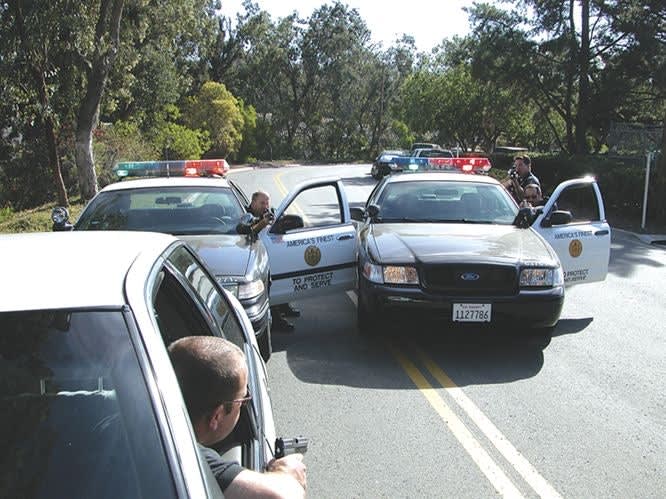Firing from dead behind several vehicles yielded some unexpected results. Almost without exception, handgun bullets fired from directly behind the vehicle continued on to the passenger compartment in cars. The deck lid and rear glass offered little in the way of an impediment. Bullets shot directly into the tag bracket penetrated the rear and front seat, often imbedding themselves in the dash.
The rear of a pickup truck is a formidable obstacle for small arms fire. In our tests, tailgates stopped handgun bullets, and if the tailgate was down or removed, most handgun bullets were stopped by the front of the truck bed.
SUVs and station wagons also offer challenges for officers shooting at them from behind. The rear tailgates of these vehicles are much more resistant to penetration than car doors. Generally heavier construction and the larger, more complex window regulators make these vehicles relative "tanks" from the rear.
In the case of full-size station wagons, only the .357 SiG, with jacketed hollowpoint ammunition, made a good showing. The only other round that gave similar performance was the full-metal- jacket .40 S&W round. During the test, the roundnose .40 exhibited penetration superior to any other round, except the .357 SiG. This illustrates that officers issued the .40 caliber might consider carrying a spare magazine loaded with full-metal-jacket ammunition for such emergencies.
Finally, while the metal work in the rear of station wagons and SUVs is tough, the glass isn't. Most rear glass in automobiles and light trucks shatters as easily as the door glass. Our tests show that a double-tap is ideal for shooting a target in the rear of a vehicle through the glass. Shoot once to shatter the glass and again to neutralize the target.












